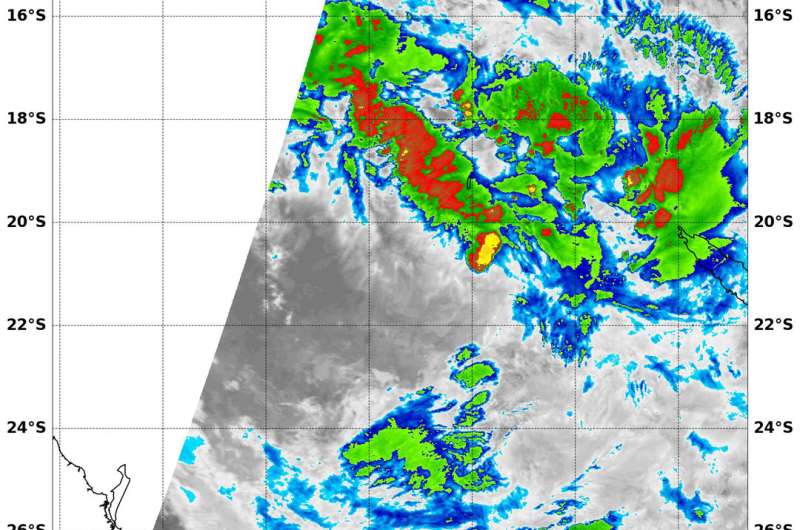NASA finds Tropical Cyclone Iris sheared

Tropical Cyclone Iris is being battered by wind shear so strong that it doesn't even look like a circular storm.
The Joint Typhoon Warning Center issued their final warning on Tropical Cyclone Iris as wind shear continued tearing the storm apart. Iris' exposed low-level center was even difficult to find on infrared imagery from NASA as wind shear stretched the storm out.
NASA's Aqua satellite passed over Iris on March 27 at 10:15 a.m. EDT (1415 UTC) and analyzed the storm in infrared light. The MODIS or Moderate Resolution Imaging Spectroradiometer instrument aboard NASA's Aqua satellite revealed three fragmented areas of thunderstorms where cloud top temperatures as cold or colder than minus 70 degrees Fahrenheit (minus 56.6 degrees Celsius). Cloud tops with temperatures that cold have the potential to generate very heavy rainfall. One area with those temperatures stretched from northwest to southeast while the other two areas were small and east of the center.
At 11 a.m. EDT (1500 UTC) on March 27 Iris was located near 20.5 degrees south latitude and 158.4 degrees east longitude. That's about 451 nautical miles west-northwest of Noumea, New Caledonia. Iris was moving to the south at 8 mph (7 knots/13 kph).
The Joint Typhoon Warning Center noted that Iris was weakening rapidly and will continue to do so as it moves over cooler waters and into areas of stronger vertical wind shear. The storm is expected to dissipate in the next day or two.
Provided by NASA's Goddard Space Flight Center





















